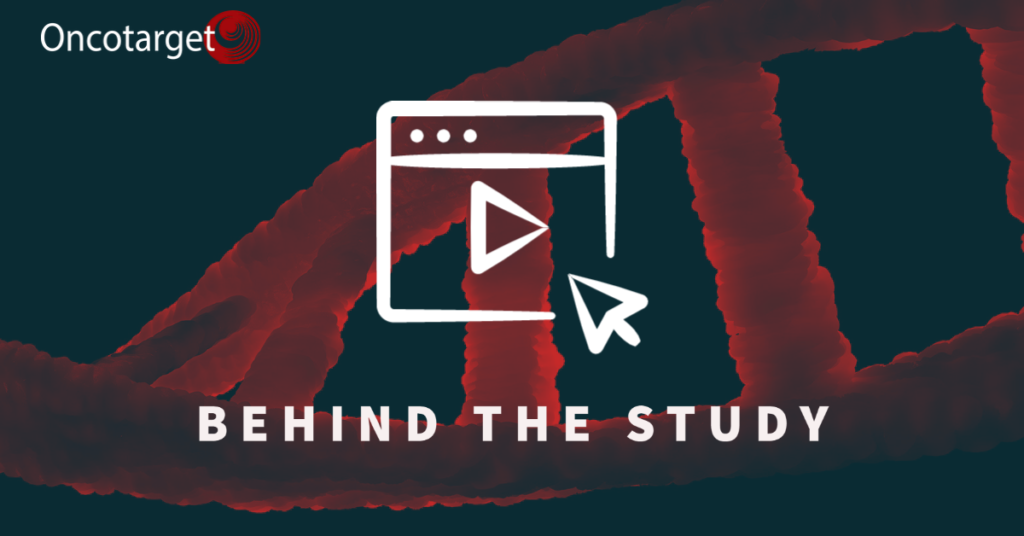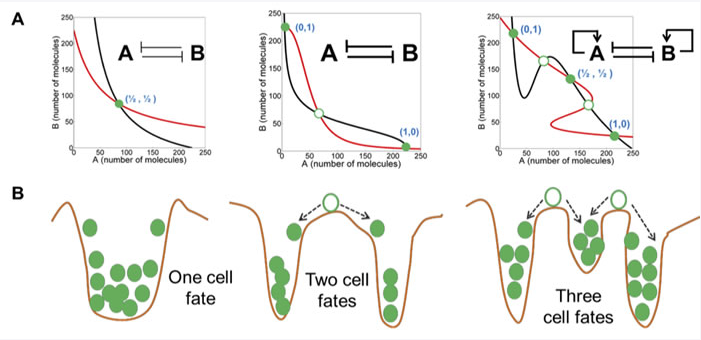Dr. Kenneth J. Pienta and Dr. J. James Frost describe their 2017 study published by Oncotarget, entitled, “Symmetry and symmetry breaking in cancer: a foundational approach to the cancer problem.”

Behind the Study is a series of transcribed videos from researchers elaborating on their recent oncology-focused studies published in Oncotarget. A new Behind the Study is released each Monday. Visit the Oncotarget YouTube channel for more insights from outstanding authors.
—
Dr. Kenneth J. Pienta
I’m Ken Pienta. I’m the Director of Research here at the Brady Urological Institute at Johns Hopkins School of Medicine. And it was my pleasure to work on this project with not only Jim Frost, who’s going to introduce himself in a second, but also our co-author, Dr. Donald S. Coffey, who was certainly one of the icons in American medicine and cancer research, who unfortunately just passed away last week after we had this paper accepted to Oncotarget. And he was very excited to be the senior author on this paper, and unfortunately we lost him. He passed away in his sleep about a week ago. And so we know he’s looking down on us taking part in this interview. And Jim, go ahead.
Dr. J. James Frost
Yeah, I’m Jim Frost. I was formerly a full-time professor in radiology here at Hopkins, specializing in molecular imaging, and I now run an advisory group for use of molecular imaging and drug development and new diagnostics. And perhaps more importantly, in college and in my PhD work, I had a lot of exposure to physics and mathematics, including concepts on symmetry, which form an important basis for the research that we conducted. And a lot of that was stimulated by conversations I had with Don Coffey on wide ranging subjects, including the mystery of symmetry and how it’s so foundational for modern understanding of physics and mathematics cosmology. So that was kind of a starting point for the current work.
Dr. Kenneth J. Pienta
The reason we continue to have these sorts of discussions is that metastatic cancer remains incurable, and we have a long tradition in the Brady of trying to understand and bring in new concepts from other fields to try and understand why cancer happens and how cancers form, really tumorigenesis. So we’ve done a wide range of collaborations with people from gene theorists to ecologists, to evolutionary biologists, to mathematicians. And Jim has really brought to us this idea of how do we not only use physics, but this: how can we look at cancer in a new way? And this idea of symmetry and symmetry breaking is something that really hasn’t been considered by cancer biologists at all. So Don and I were extremely excited to partner with Jim to do this. Why don’t you just go into symmetry a little bit and why we think it applies to cancer?
Dr. J. James Frost
Right. And what Ken was talking about was also another big stimulus for me, overlaying the concepts of symmetry breaking with what cancer is and why it’s so difficult as a problem to solve. And so coming into Ken’s group with the people in his group was really very educational and taught me a lot about cancer and why it’s so difficult to solve. So then taking the example of how useful symmetry has been in physics and mathematics, I started to ask the question: Could that also be applied to cancer as a state of broken symmetry beyond that of normal biology, which can be viewed as somewhere between perfect order and complete chaos and disorder, so it’s in that intermediate realm? So then in the article, we looked into the question of whether cancer could be viewed as a state of further broken symmetry, which leads to the loss of the homeostasis and other factors involved in the character of cancer.

So what is symmetry? I mean, we understand what it is from geometry, and at one level, it could be viewed as that, which is it stays the same when a change made. So if you rotate a triangle by 120 degrees, an equilateral triangle, you get the same triangle, even though you’ve made a change. And that turns out to be very fundamental for understanding the universe in general. Chopping off the side of an apple is a type of symmetry breaking.
So many of these factors, as we showed in the article, can then be extended to cancer, particularly in the sense of cancer networks, protein networks, gene networks, that are connections that involve, in the more fundamental sense, a graph of interconnections, like the worldwide web or the electrical grid. And it turns out that there is a body of knowledge showing that more asymmetric networks are more vulnerable to attack and have diminished stability. So in the article, we talk about how that can be folded into existing concepts of cancer at the system level to understand how cancer evolves as a possible state of broken symmetry. And then more importantly, how we can potentially attack it at vulnerable points in the network that are more greatly broken symmetry.
Dr. Kenneth J. Pienta
I think one of the things that we’re fascinated by is that, for example, this is symmetric. No matter how you look at it, it’s totally symmetric, and you can really say that this represents a cell. All normal cells have an access point by which you can spin it, and they’re symmetric. So the same is very true of nuclei and other parts of the cell structure, but one of the things that fascinates us is that cancer is broken, but it still functions. And it’s hard to believe that a cancer cell is actually functional because its got broken symmetry. And trying to understand that is really what we’re trying to do in the paper. Similarly, if you look at DNA, it’s symmetric, it’s got a code that we all work. But cancer DNA is like this, it’s crazy and it’s still functional.
So we believe that, and what we were trying to do in the paper, and what Jim has taught us, is that symmetry is fundamental to understanding biologic structure. And the fact that cancer is broken symmetry, it not only needs to be understood, but we think will give us new ways to think about how to therapeutically target a cancer. We already use broken symmetry in diagnosis and prognosis. So a pathologist looks at the slide and goes, “That cell’s nuclear structure is abnormal,” and grades that, and we know that that has not only diagnostic, but prognostic information. It’s not a far leap to say broken symmetry will help us understand function better, and to target it.
Dr. J. James Frost
And those are important points in the space of geometric symmetry breaking like Ken so nicely chose. But the article goes beyond that in terms of, say, information space, and information asymmetry, and functional asymmetry, that is not strictly related to the geometry of the cell or the DNA, although in the article, we talk about how they are definitely related. So we extend the concept beyond just geometric symmetry breaking to functional symmetry breaking, and even something we call combinatorial symmetry breaking, which is related to the cancer network within itself, the micro environment, communication really across the body, which can be viewed in terms of symmetry concepts. So we try and make it as foundational as possible and show how, with further research, we could advance new understanding around cancer.
Click here to read the full study published in Oncotarget.
—
Oncotarget is a unique platform designed to house scientific studies in a journal format that is available for anyone to read—without a paywall making access more difficult. This means information that has the potential to benefit our societies from the inside out can be shared with friends, neighbors, colleagues and other researchers, far and wide.
For media inquiries, please contact media@impactjournals.com.




